#Diane Purkiss
Text
Remember when historian Diane Purkiss chose violence? 🤣
“In this essay, I will show that medieval and early modern witchcraft was for the most part not a pagan practice, but a dissident form of Christianity. I will also argue that modern pagans and modern witches are themselves products of the very globalized, commercial, urban and anywhere culture which they set out to resist.”
315 notes
·
View notes
Text
WITCHCRAFT: EIGHT MYTHS AND MISCONCEPTIONS
1. Witches were burned at the stake
Not in English-speaking countries. Witchcraft was a felony in both England and its American colonies, and therefore witches were hanged, not burned. However, witches’ bodies were burned in Scotland, though they were strangled to death first.
2. Nine million witches died in the years of the witch persecutions
About 30,000–60,000 people were executed in the whole of the main era of witchcraft persecutions, from the 1427–36 witch-hunts in Savoy (in the western Alps) to the execution of Anna Goldi in the Swiss canton of Glarus in 1782. These figures include estimates for cases where no records exist.
3. Once accused, a witch had no chance of proving her innocence
Only 25 percent of those tried across the period in England were found guilty and executed.
4. Millions of innocent people were rounded up on suspicion of witchcraft
The total number of people tried for witchcraft in England throughout the period of persecution was no more than 2,000. Most judges and many jurymen were highly sceptical about the existence of magical powers, seeing the whole thing as a huge con trick by fraudsters. Many others knew that old women could be persecuted by their neighbours for no reason other than that they weren’t very attractive.
5. The Spanish Inquisition and the Catholic Church instigated the witch trials
All four of the major western Christian denominations (the Roman Catholic, Lutheran, Calvinist and Anglican churches) persecuted witches to some degree. Eastern Christian, or Orthodox, churches carried out almost no witch-hunting. In England, Scotland, Scandinavia and Geneva, witch trials were carried out by Protestant states. The Spanish Inquisition executed only two witches in total.
6. King James I was terrified of witches and was responsible for their hunting and execution
More accused witches were executed in the last decade of Elizabeth I’s reign (1558–1603) than under her successor, James I (1603–25).The first Witchcraft Act was passed under Henry VIII, in 1542, and made all pact witchcraft (in which a deal is made with the Devil) or summoning of spirits a capital crime. The 1604 Witchcraft Act under James could be described as a reversion to that status quo rather than an innovation.
In Scotland, where he had ruled as James VI since 1587, James had personally intervened in the 1590 trial of the North Berwick witches, who were accused of attempting to kill him. He wrote the treatise Daemonologie, published in 1597. However, when King of England, James spent some time exposing fraudulent cases of demonic possession, rather than finding and prosecuting witches.
7. Witch-hunting was really women-hunting, since most witches were women
In England the majority of those accused were women. In other countries, including some of the Scandinavian countries, men were in a slight majority. Even in England, the idea of a male witch was perfectly feasible. Across Europe, in the years of witch persecution around 6,000 men – 10 to 15 per cent of the total – were executed for witchcraft. In England, most of the accusers and those making written complaints against witches were women.
8. Witches were really goddess-worshipping herbalist midwives
Nobody was goddess-worshipping during the period of the witch-hunts, or if they were, they have left no trace in the historical records. Despite the beliefs of lawyers, historians and politicians (such as Karl Ernst Jarcke, Franz-Josef Mone, Jules Michelet, Margaret Murray and Heinrich Himmler among others), there was no ‘real’ pagan witchcraft. There was some residual paganism in a very few trials.
The idea that those accused of witchcraft were midwives or herbalists, and especially that they were midwives possessed of feminine expertise that threatened male authority, is a myth. Midwives were rarely accused. Instead, they were more likely to work side by side with the accusers to help them to identify witch marks. These were marks on the body believed to indicate that an individual was a witch (not to be confused with the marks scratched or carved on buildings to ward off witches).
- Diane Purkiss, Professor of English Literature at Keble College, University of Oxford
69 notes
·
View notes
Text
“Magic in fantasy for children is not the redistribution of wealth, but the redistribution of hope.” — Diane Purkiss, “Books of Magic”
3 notes
·
View notes
Photo
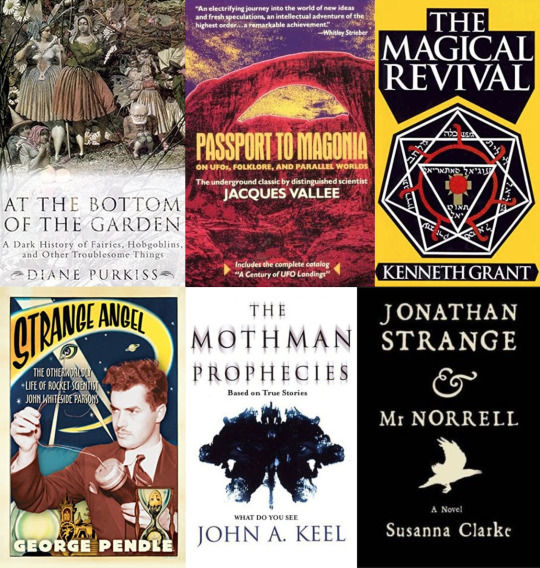
2022 Reading Roundup: Favorite Wyrd Reads
Honorable mention: Ezra Rose’s great zine FYMA: A Lesser Key to the Appropriation of Jewish Magic & Mysticism. I read this zine between The Magical Revival & selections on Babalon for occult book club. It’s stuck in my memory, stubbornly staring me in the face every time I encounter the appropriation of Hebrew & other anitsemitism in the “Western esoteric tradition” (basically all the time). Essential reading for anyone interested in the occult.
#bookblr#shelfblr#uncle al's bookclub#diane purkiss#faerie#passport to magonia#jacques vallee#kenneth grant#the magical revival#strange angel#jack parsons#the mothman prophecies#john a. keel#jonathan strange and mr norrell#occult book club#occult
15 notes
·
View notes
Text
GEILIE DUNCAN’S WITCH TRIAL
27.1.1591-8.5.1591 was part of the North Berwick witch hunt in 🏴. It involved many people and many accusations about witches meetings, specifically two separate attempts to sink the royal ships. The first to sink Queen Anne on her way home, second to trouble King James after he went to get her in Denmark. (Scot.Witch.Datab.) Political motive was clearly part of these trials.
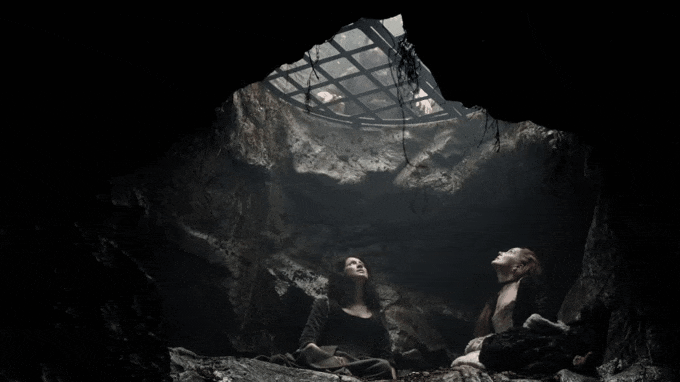
Above Geilis Duncan enforcement of judgment in Outlander . Below my “Historical center of Edinburgh “ Click the VIDEO
James VI was personally involved in prosecuting the witches who had tried to sink his ship. It is claimed that James VI ordered Geilie to perform a dance tune (using Jew’s harp) in public, after she was named to be leading the dance in the sabbath. (Purkiss 1996.) Maidservant Duncan was most probably tortured with the thumbscrew (could she actually play?). And the Devil’s mark was identified.
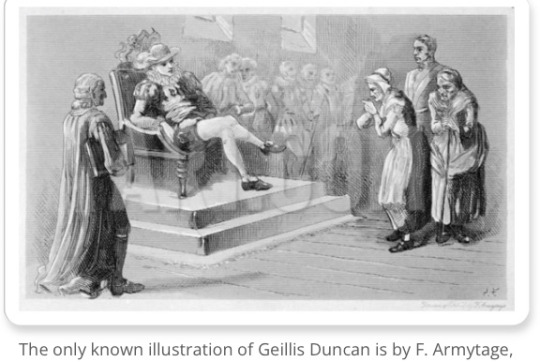
🇫🇮In his book Demonology James VI mentions, that barbaric Finland is one of the places where you can meet incubi & succubi demons: “Phi. But what is the cause that this kinde of abuse if thought to be most common in such wild partes of the worlde, as Lap-land, and Fin-land, or in out North Iles of Orknay and Schet-land. Epi. Because where the Devill finds greatest ignorance and barbaritie, there assayles he grosseliest, as I gave you the reason wherefore there was moe Witches of women kinde nor men.” This might be one evidence that he met the famous Danish demonologist Niels Hemmingsen. (Ryynänen 2010.)

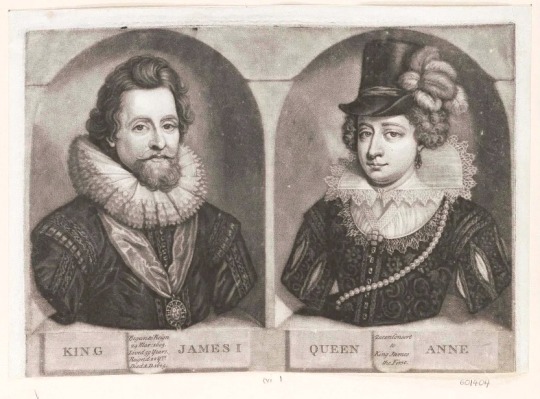
⚖️Duncan confessed to having a meeting with Agnes Sampson and others where they ate sweat meats, roasted fowl and drank by the sea. Gathering was part of the planning of the conspiracy to sink Queen Anne's ships on the way from Denmark.(Scot.Witch.Datab.)
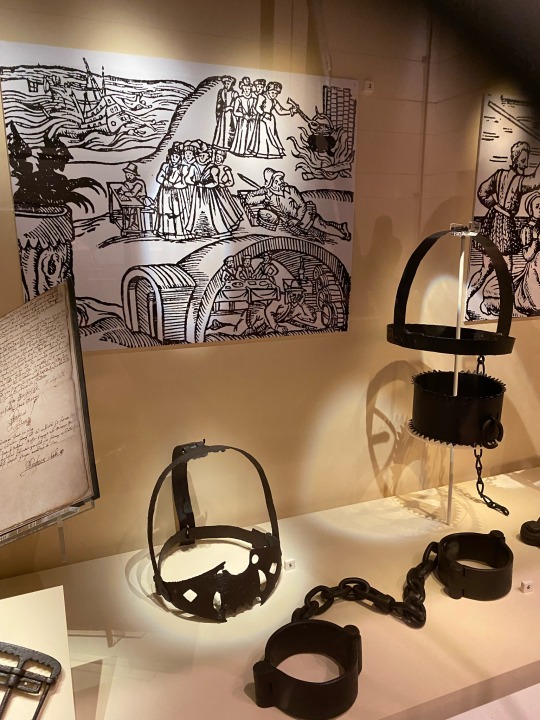
🛋James VI wanted to show his manhood and independence by this act (marriage). But he felt he had encountered a conspiracy and hostile forces that perhaps rose in his own mind. Perhaps Acts off self-assertion which crossed the will of maternal figure’s (Queen Mary & Queen Elizabeth) still arouse fears maternal retaliation-fears that would make witch-hunting all the more likely to make emotional sense to the embattled young king. (Willis 1995.)
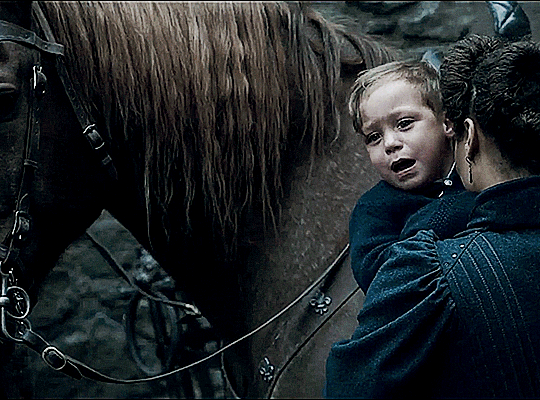
Above Mary Queen of Scots (2018) . Below James as a child - National Museum of Scotland
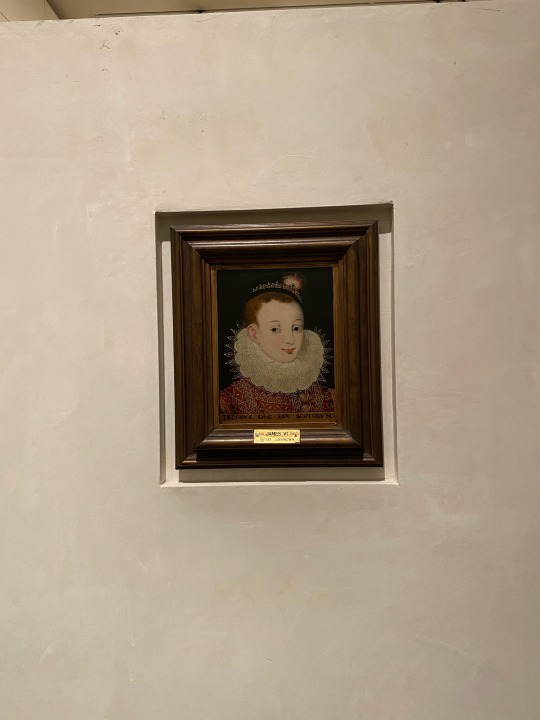
Sources: Deborah Willis 1995. Malevolent Nurture.
Survey of Scottish Witchcraft Database
Timo Ryynänen 2010. James VI: The Demonologist King. Demonic Descriptions and Their Context in James VI’s Daemonologie.
Purkiss, Diane. 1996. The Witch in History: Early Modern and Twentieth-century Representations. 👀🎧more - starting point 26:00 min in my YouTube video….

youtube
#scotland#outlander#mary queen of scots#james vi#Queen Anne of Denmark#witchcraft#witch#witches#witch trials#art history#movies#history#denmark#psychoanalysis#Deborah Willis#Diane Purkiss#cinema#museum#national museum of scotland#grass market#witches well#Edinburgh#witchythings#witchyvibes#margot robbie#saoirse ronan#Youtube
5 notes
·
View notes
Text
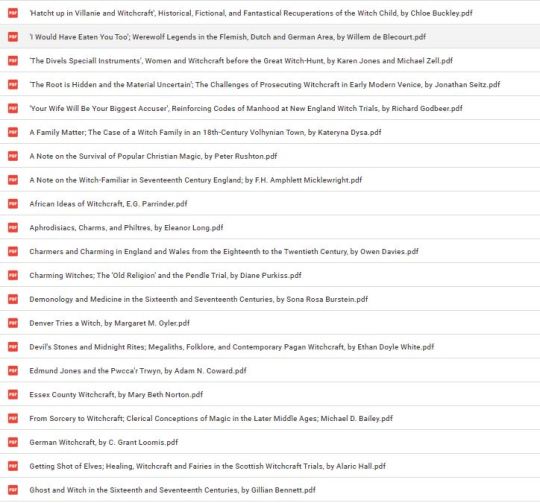





JSTOR Articles on the History of Witchcraft, Witch Trials, and Folk Magic Beliefs
This is a partial of of articles on these subjects that can be found in the JSTOR archives. This is not exhaustive - this is just the portion I've saved for my own studies (I've read and referenced about a third of them so far) and I encourage readers and researchers to do their own digging. I recommend the articles by Ronald Hutton, Owen Davies, Mary Beth Norton, Malcolm Gaskill, Michael D. Bailey, and Willem de Blecourt as a place to start.
If you don't have personal access to JSTOR, you may be able to access the archive through your local library, university, museum, or historical society.
Full text list of titles below the cut:
'Hatcht up in Villanie and Witchcraft': Historical, Fiction, and Fantastical Recuperations of the Witch Child, by Chloe Buckley
'I Would Have Eaten You Too': Werewolf Legends in the Flemish, Dutch and German Area, by Willem de Blecourt
'The Divels Special Instruments': Women and Witchcraft before the Great Witch-hunt, by Karen Jones and Michael Zell
'The Root is Hidden and the Material Uncertain': The Challenges of Prosecuting Witchcraft in Early Modern Venice, by Jonathan Seitz
'Your Wife Will Be Your Biggest Accuser': Reinforcing Codes of Manhood at New England Witch Trials, by Richard Godbeer
A Family Matter: The CAse of a Witch Family in an 18th-Century Volhynian Town, by Kateryna Dysa
A Note on the Survival of Popular Christian Magic, by Peter Rushton
A Note on the Witch-Familiar in Seventeenth Century England, by F.H. Amphlett Micklewright
African Ideas of Witchcraft, by E.G. Parrinder
Aprodisiacs, Charms, and Philtres, by Eleanor Long
Charmers and Charming in England and Wales from the Eighteenth to the Twentieth Century, by Owen Davies
Charming Witches: The 'Old Religion' and the Pendle Trial, by Diane Purkiss
Demonology and Medicine in the Sixteenth and Seventeenth Centuries, by Sona Rosa Burstein
Denver Tries A Witch, by Margaret M. Oyler
Devil's Stones and Midnight Rites: Megaliths, Folklore, and Contemporary Pagan Witchcraft, by Ethan Doyle White
Edmund Jones and the Pwcca'r Trwyn, by Adam N. Coward
Essex County Witchcraft, by Mary Beth Norton
From Sorcery to Witchcraft: Clerical Conceptions of Magic in the Later Middle Ages, by Michael D. Bailey
German Witchcraft, by C. Grant Loomis
Getting of Elves: Healing, Witchcraft and Fairies in the Scottish Witchcraft Trials, by Alaric Hall
Ghost and Witch in the Sixteenth and Seventeenth Centuries, by Gillian Bennett
Ghosts in Mirrors: Reflections of the Self, by Elizabeth Tucker
Healing Charms in Use in England and Wales 1700-1950, by Owen Davies
How Pagan Were Medieval English Peasants?, by Ronald Hutton
Invisible Men: The Historian and the Male Witch, by Lara Apps and Andrew Gow
Johannes Junius: Bamberg's Famous Male Witch, by Lara Apps and Andrew Gow
Knots and Knot Lore, by Cyrus L. Day
Learned Credulity in Gianfrancesco Pico's Strix, by Walter Stephens
Literally Unthinkable: Demonological Descriptions of Male Witches, by Lara Apps and Andrew Gow
Magical Beliefs and Practices in Old Bulgaria, by Louis Petroff
Maleficent Witchcraft in Britian since 1900, by Thomas Waters
Masculinity and Male Witches in Old and New England, 1593-1680, by E.J. Kent
Methodism, the Clergy, and the Popular Belief in Witchcraft and Magic, by Owen Davies
Modern Pagan Festivals: A Study in the Nature of Tradition, by Ronald Hutton
Monstrous Theories: Werewolves and the Abuse of History, by Willem de Blecourt
Neapolitan Witchcraft, by J.B. Andrews and James G. Frazer
New England's Other Witch-Hunt: The Hartford Witch-Hunt of the 1660s and Changing Patterns in Witchcraft Prosecution, by Walter Woodward
Newspapers and the Popular Belief in Witchcraft and Magic in the Modern Period, by Owen Davies
Occult Influence, Free Will, and Medical Authority in the Old Bailey, circa 1860-1910, by Karl Bell
Paganism and Polemic: The Debate over the Origins of Modern Pagan Witchcraft, by Ronald Hutton
Plants, Livestock Losses and Witchcraft Accusations in Tudor and Stuart England, by Sally Hickey
Polychronican: Witchcraft History and Children, interpreting England's Biggest Witch Trial, 1612, by Robert Poole
Publishing for the Masses: Early Modern English Witchcraft Pamphlets, by Carla Suhr
Rethinking with Demons: The Campaign against Superstition in Late Medieval and Early Modern Europe from a Cognitive Perspective, by Andrew Keitt
Seasonal Festivity in Late Medieval England, Some Further Reflections, by Ronald Hutton
Secondary Targets: Male Witches on Trial, by Lara Apps and Andrew Gow
Some Notes on Modern Somerset Witch-Lore, by R.L. Tongue
Some Notes on the History and Practice of Witchcraft in the Eastern Counties, by L.F. Newman
Some Seventeenth-Century Books of Magic, by K.M. Briggs
Stones and Spirits, by Jane P. Davidson and Christopher John Duffin
Superstitions, Magic, and Witchcraft, by Jeffrey R. Watt
The 1850s Prosecution of Gerasim Fedotov for Witchcraft, by Christine D. Worobec
The Catholic Salem: How the Devil Destroyed a Saint's Parish (Mattaincourt, 1627-31), by William Monter
The Celtic Tarot and the Secret Tradition: A Study in Modern Legend Making, by Juliette Wood
The Cult of Seely Wights in Scotland, by Julian Goodare
The Decline of Magic: Challenge and Response in Early Enlightenment England, by Michael Hunter
The Devil-Worshippers at the Prom: Rumor-Panic as Therapeutic Magic, by Bill Ellis
The Devil's Pact: Diabolic Writing and Oral Tradition, by Kimberly Ball
The Discovery of Witches: Matthew Hopkins' Defense of his Witch-hunting Methods, by Sheilagh Ilona O'Brien
The Disenchantment of Magic: Spells, Charms, and Superstition in Early European Witchcraft Literature, by Michael D. Bailey
The Epistemology of Sexual Trauma in Witches' Sabbaths, Satanic Ritual Abuse, and Alien Abduction Narratives, by Joseph Laycock
The European Witchcraft Debate and the Dutch Variant, by Marijke Gijswijt-Hofstra
The Flying Phallus and the Laughing Inquisitor: Penis Theft in the Malleus Maleficarum, by Moira Smith
The Framework for Scottish Witch-Hunting for the 1590s, by Julian Goodare
The Imposture of Witchcraft, by Rossell Hope Robbins
The Last Witch of England, by J.B. Kingsbury
The Late Lancashire Witches: The Girls Next Door, by Meg Pearson
The Malefic Unconscious: Gender, Genre, and History in Early Antebellum Witchcraft Narratives, by Lisa M. Vetere
The Mingling of Fairy and Witch Beliefs in Sixteenth and Seventeenth Century Scotland, by J.A. MacCulloch
The Nightmare Experience, Sleep Paralysis, and Witchcraft Accusations, by Owen Davies
The Pursuit of Reality: Recent Research into the History of Witchcraft, by Malcolm Gaskill
The Reception of Reginald Scot's Discovery of Witchcraft: Witchcraft, Magic, and Radical Religions, by S.F. Davies
The Role of Gender in Accusations of Witchcraft: The Case of Eastern Slovenia, by Mirjam Mencej
The Scottish Witchcraft Act, by Julian Goodare
The Werewolves of Livonia: Lycanthropy and Shape-Changing in Scholarly Texts, 1550-1720, by Stefan Donecker
The Wild Hunter and the Witches' Sabbath, by Ronald Hutton
The Winter Goddess: Percht, Holda, and Related Figures, by Lotta Motz
The Witch's Familiar and the Fairy in Early Modern England and Scotland, by Emma Wilby
The Witches of Canewdon, by Eric Maple
The Witches of Dengie, by Eric Maple
The Witches' Flying and the Spanish Inquisitors, or How to Explain Away the Impossible, by Gustav Henningsen
To Accommodate the Earthly Kingdom to Divine Will: Official and Nonconformist Definitions of Witchcraft in England, by Agustin Mendez
Unwitching: The Social and Magical Practice in Traditional European Communities, by Mirjam Mencej
Urbanization and the Decline of Witchcraft: An Examination of London, by Owen Davies
Weather, Prayer, and Magical Jugs, by Ralph Merrifield
Witchcraft and Evidence in Early Modern England, by Malcolm Gaskill
Witchcraft and Magic in the Elizabethan Drama by H.W. Herrington
Witchcraft and Magic in the Rochford Hundred, by Eric Maple
Witchcraft and Old Women in Early Modern Germany, by Alison Rowlands
Witchcraft and Sexual Knowledge in Early Modern England, by Julia M. Garrett
Witchcraft and Silence in Guillaume Cazaux's 'The Mass of Saint Secaire', by William G. Pooley
Witchcraft and the Early Modern Imagination, by Robin Briggs
Witchcraft and the Western Imagination by Lyndal Roper
Witchcraft Belief and Trals in Early Modern Ireland, by Andrew Sneddon
Witchcraft Deaths, by Mimi Clar
Witchcraft Fears and Psychosocial Factors in Disease, by Edward Bever
Witchcraft for Sale, by T.M. Pearce
Witchcraft in Denmark, by Gustav Henningsen
Witchcraft in Germany, by Taras Lukach
Witchcraft in Kilkenny, by T. Crofton Croker
Witchcraft in Anglo-American Colonies, by Mary Beth Norton
Witchcraft in the Central Balkans I: Characteristics of Witches, by T.P. Vukanovic
Witchcraft in the Central Balkans II: Protection Against Witches, by T.P. Vukanovic
Witchcraft Justice and Human Rights in Africa, Cases from Malawi, by Adam Ashforth
Witchcraft Magic and Spirits on the Border of Pennsylvania and West Virginia, by S.P. Bayard
Witchcraft Persecutions in the Post-Craze Era: The Case of Ann Izzard of Great Paxton, 1808, by Stephen A. Mitchell
Witchcraft Prosecutions and the Decline of Magic, by Edward Bever
Witchcraft, by Ray B. Browne
Witchcraft, Poison, Law, and Atlantic Slavery, by Diana Paton
Witchcraft, Politics, and Memory in Seventeeth-Century England, by Malcolm Gaskill
Witchcraft, Spirit Possession and Heresy, by Lucy Mair
Witchcraft, Women's Honour and Customary Law in Early Modern Wales, by Sally Parkin
Witches and Witchbusters, by Jacqueline Simpson
Witches, Cunning Folk, and Competition in Denmark, by Timothy R. Tangherlini
Witches' Herbs on Trial, by Michael Ostling
#witchcraft#witchblr#history#history of witchcraft#occult#witch trials#research#recommended reading#book recs#jstor
2K notes
·
View notes
Text
In Anglo-Saxon times, a lord was, literally, a loaf-giver, the one who put bread on the table. The Anglo-Saxon word hlaford means loaf-keeper and lord, while hlæfdige, lady, is from hlaibadigon, bread-kneader.
Diane Purkiss, English Food A People's History
42 notes
·
View notes
Text
On Witches... Tis the Season 🎃
Just a little research for the book I'm working on right now... this article had some fascinating points. It's always so interesting to me how many still believe Christianity started it all...
---------------------------------------
Excerpt:
"Most people think that witches are a Christian invention. But the idea of the witch who flies in the night and draws power from dark cosmic forces to work her ill will on others pre-dates Christianity, probably by many centuries.
In Homer’s Odyssey (c.800 BC), Circe – who turns men into animals – is described as a witch, and Plutarch refers to witchcraft in his treatise On Superstition (c.AD 100). Illicit magic features heavily in Roman law statutes, some of which are passed down to the Christian world. However, many of those early laws were really laws against sorcery, which unlike witchcraft can be beneficial, and which requires special skills, tools and words.
Archaeologists have found hundreds of ancient Greek curse tablets, which the Greeks called katares, ‘curses that bind tight’, and they appear to have invented them, with a great number focused on sporting competitions or legal contests. The inscribed tablets were left in graves, wells or fountains, where the dead could better work their magic."
(Read more at the link above)
13 notes
·
View notes
Text
From Queen to Captive – Witchcraft, Women and Power - Speaking with Shadows - Omny.fm
Josie [Long] speaks to historian Virginia Davis about the lives of ordinary women in the Middle Ages, and to Professor Diane Purkiss about the origins of popular witchcraft beliefs and how these could be used to persecute women over the centuries.
0 notes
Text
"The blackness and the blood; formlessness, terror, entrapment. And yet blood and darkness are also associated with sexuality, bodily hunger. Fairyland is hungry for human blood, vampiric, and this hunger for blood symbolizes a hunger for blood products, for male seed, male flesh. This passion for blood links fairies to ancestors, to the dead. Ancestors, if neglected and not fed carefully, are vengeful, and are apt to drink the blood of the living members of the family. A Highland legend says that you must bring water into the house at night so the fairies don't quench their thirst with your blood. Women seem particularly hungry for blood: an old woman given shelter for the night in the Highlands was surprised drinking the blood of her hosts. In Ireland, according to Lady Wilde, the peasants sensibly refused the common medical procedure of bleeding patients, because being bled would make the good people angry. Fairies are also said to have dried bodies, hard, wrinkled, bony; they need blood. They need new blood.
Fairyland - or the way to it, at least - is a kind of womb as imagined by a terrified male, a maternal body which does not nurture but destroys. To enter fairyland is to be born again, to go through birth as an adult, an adult who is conscious of the dreadful process."
At the Bottom of the Garden, Diane Purkiss, pg. 68-69
#fairy faith#faery faith#fae#faeries#traditional witchcraft#witchcraft#book quotes#diane purkiss#at the bottom of the garden#fair folk#the fair folk#the fae#faery
120 notes
·
View notes
Link
The vast majority of people tried for witchcraft in England during the period of the witch hunts are elderly, so far are they from being seductive. They tend to be elderly; they tend to be lame; they tend to have an unevenness of body, like one brown eye or one blue, for instance, or they’re thought to be missing one eye...
If you think of the witches in Shakespeare’s Macbeth, and how they’re so beyond menopause that they’ve started growing facial hair, that’s a more traditional focus of anxiety and dread in local communities than the buxom, pretty witch we might now associate with either television drama or pre-Raphaelite art.
32 notes
·
View notes
Quote
One of the recurring problems with fairies is that hard bony thought constantly melts into a jelly of aesthetics.
Diane Purkiss, At the Bottom of the Garden: A Dark History of Fairies, Hobgoblins, and Other Troublesome Things (NYU Press, 2000)
6 notes
·
View notes
Text
“Mortals are not supposed to try to achieve the status of gods by using magic.” — Diane Purkiss, “Books of Magic”
0 notes
Link
Hot fucking take on modern witchcraft and paganism from witchcraft historian Diane Purkiss
3 notes
·
View notes
Quote
She is a gatekeeper, and she guards the entrance to a new realm. Like all gatekeepers, she is Janus-faced, ambiguous: she has a lovely face, a face of promise, and a hideous face, a face of fear.
Diane Purkiss, At the Bottom of the Garden.
#diane purkiss#at the bottom of the garden#my posts.#hecate tag.#when i hit the SNM fandom with my fairy discourse...........#you all won't be able to HANDLE it!!
5 notes
·
View notes
